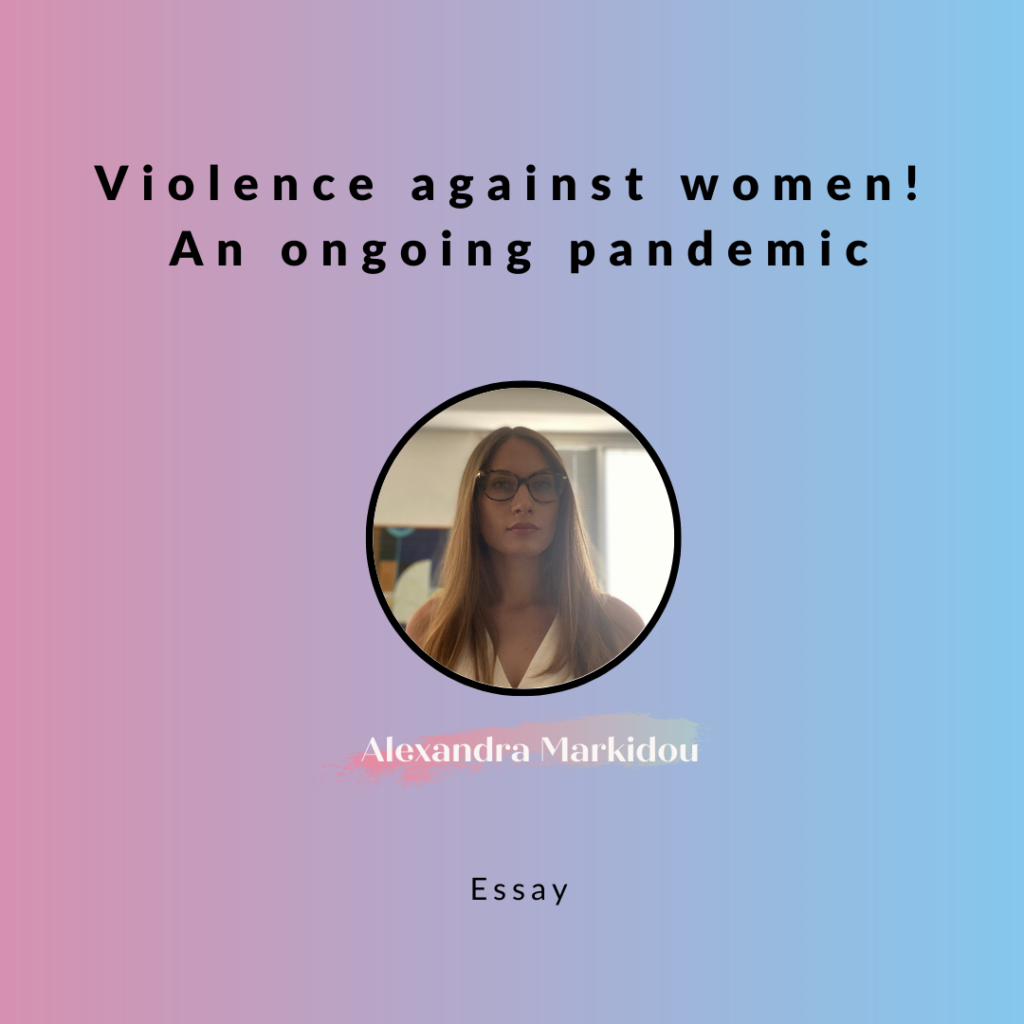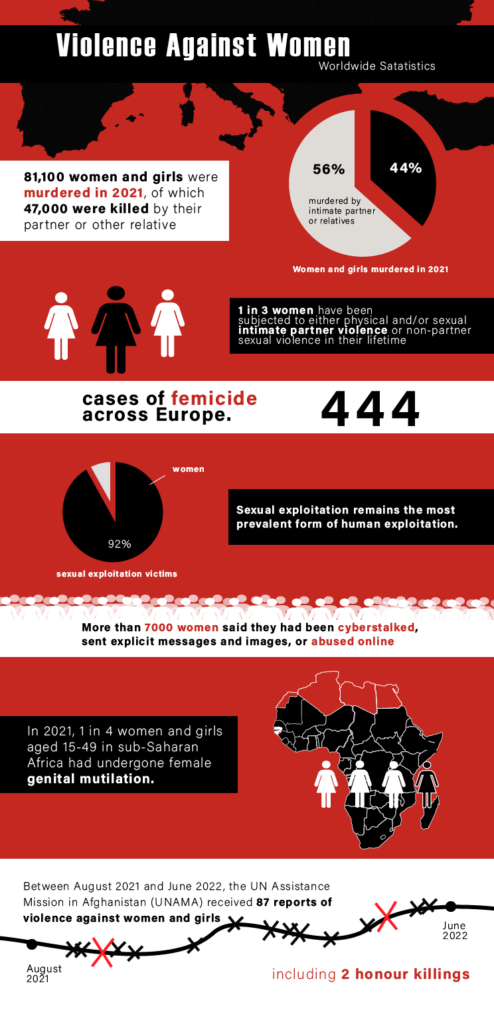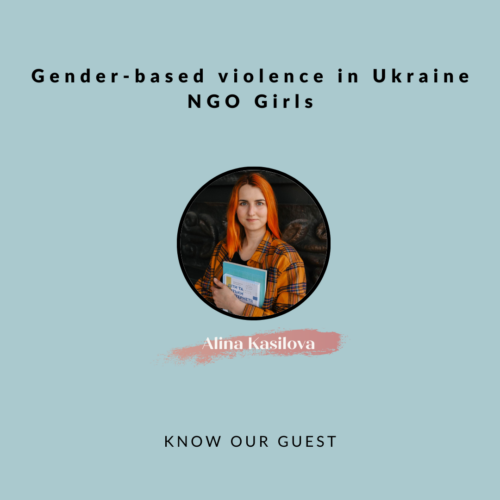
On the occasion of the International Day for the Elimination of Violence Against Women, we are taking a stance to reiterate that violence against women and girls persists and remains widespread across the European Union and beyond, with a serious impact on the health and lives of women and girls, families, communities and societies at large.
It is a violation of human rights that disproportionately affects women and girls. It has also been highlighted and exacerbated by COVID-19.
Legal definitions of Violence against Women
As defined by the UN Declaration on the Elimination of Violence against Women (1993), violence against women (VAW) is “any act of gender-based violence that results in, or is likely to result in physical, sexual or psychological harm or suffering to women, including threats of such acts, coercion or arbitrary deprivation of liberty, whether occurring in public and private life”.
Also defined by Article 3 of the Council of Europe Convention on preventing and combating violence against women and domestic violence (Istanbul Convention), ‘violence against women’ is understood as “a violation of human rights and a form of discrimination against women and shall mean all acts of gender-based violence that result in, or are likely to result in, physical, sexual, psychological or economic harm or suffering to women, including threats of such acts, coercion or arbitrary deprivation of liberty, whether occurring in public or in private life”.
The Istanbul Convention remains the first legally binding and the most comprehensive legal framework to combat violence against women, focusing on preventing violence, protecting victims, prosecuting the accused offenders, and promoting coordinated policies and is greatly upheld by member states. We have witnessed several states passing legislative reform, with the Istanbul Convention being set as part of their benchmark and should continue to be upheld as an instrument for the protection of women against any form of violence.
Insights from EU statistics on Violence against Women

In 2020, the European Institute for Gender Equality recorded 444 cases of femicide across Europe – almost certainly an underestimate.
Trafficking for sexual exploitation remains the most prevalent form of human exploitation in the European Union. Nearly three quarters (72%) of all victims in the EU and 92% of victims trafficked for sexual exploitation are women and girls.
According to the EU Fundamental Rights Survey of 2021, (FRA survey 2021) overall, 2 in 5 people (41 %) in the EU-27 experienced harassment (one or more acts) in the 5 years before the survey and 29 % experienced it in the 12 months before the survey. That corresponds to almost 110 million people in the EU-27 experiencing harassment in a year (an estimate based on the results of the survey relative to the EU’s population). Although there is no gender-disaggregated EU-wide survey on the prevalence and harms of cyber VAWG and there is limited national-level research within EU Member States, available research suggests that women are disproportionately the targets of certain forms of cyber violence compared to men.
According to the EU Fundamental Rights Survey of 2014, overall, 14 % of people in the EU experienced cyber-harassment in the 5 years before the survey. Moreover, 5 % of women have experienced one or more forms of cyberstalking since the age of 15, and 2 % have experienced it in the 12 months preceding the survey.The importance of cyber-security free from cyber-violence has been highlighted by the Group of Experts on Action against Violence against Women and Domestic Violence (GREVIO), responsible for monitoring the implementation of the Istanbul Convention, by publishing on November 24, 2021 its General Recommendation No. 1 for the digital dimension of violence against women∙ the first one adopted by the Council of Europe which outlines the problem of both gender-based violence against women committed online and facilitated by technology.
Violence against Women: a world wide Pandemic
In a recent poll commissioned by Amnesty and carried out in 8 countries by Ipsos MORI, 23% of women surveyed across all countries – that’s nearly a quarter – had experienced online abuse or harassment. Countries where poll was conducted include Denmark, Italy, New Zealand, Poland, Spain, Sweden, the UK and USA.
Women who are politically active online experience insults, hate speech, reputational risk, physical threats and sexualized misrepresentation. Women activists are targeted by forms of abuse intended to silence them, including “pile-ons” where activists are targeted by coordinated waves of different forms of online abuse. There is evidence that women and girls experience higher rates and more severe online violence when engaging in advocacy, particularly related to gender justice.
According to a recent survey conducted by NGO ‘Plan International’, more than half of the interviewed 14 000 women with the age of 15- to 25 from 22 different countries said they had been cyberstalked, sent explicit messages and images, or abused online. The 22 countries from which data was gathered are Australia, Benin, Brazil, Canada, Colombia, Dominican Republic, Ecuador, Germany, Ghana, Guinea, India, Indonesia, Japan, Kenya, Netherlands, Nigeria, Norway, Philippines, Spain, Thailand, USA, Zambia.
Based on a 2018 analysis of prevalence data from 2000-2018 across 161 countries and areas, conducted by WHO on behalf of the UN Interagency working group on violence against women:
- about 1 in 3 (30%) of women worldwide have been subjected to either physical and/or sexual intimate partner violence or non-partner sexual violence in their lifetime∙most of this violence is intimate partner violence.
- almost one third (27%) of women aged 15-49 years who have been in a relationship report that they have been subjected to some form of physical and/or sexual violence by their intimate partner.
Some 45,000 women and girls more than half (56%)of the 81,100 murdered last year worldwide were killed by their husband, partner or other relative.
In 2021, 1 in 4 women and girls aged 15-49 in sub-Saharan Africa (24.7%) had undergone female genital mutilation.
Violence against women and girls in Afghanistan remains until today a pervasive problem. Between August 2021 and June 2022, the UN Assistance Mission in Afghanistan (UNAMA) received 87 reports of violence against women and girls, including 2 honour killings, none of which were processed through the formal justice system however there are underreported cases due to data gathering limitations and reporting barriers.
In Iran we are witnessing violations of women’s freedom of movement and the fundamental right to self-determination and choice. The death in custody of Mahsa (Zhina) Amini on September 16, 2022, at the hands of Iran’s “morality” police for wearing a loose hijab, sparked the civil society movement in Iran against the Iranian regime and gender apartheid, with women leading the movement in defiance of any risk to their lives. Security forces have responded with unlawful force, including lethal, killing men, women and children and injuring thousands of others.
Women’s rights are human rights
Violence is a clear violation of a victim’s rights, in particular human dignity and the integrity of the person (Articles 1 and 3 of the Charter). In light of the right to an effective remedy (Article 13 of the European Convention on Human Rights and Article 47 of the Charter), criminal proceedings assert the victim’s rights as they preserve the identity of a community of law based on human dignity and human rights. In line with the Victim’s Rights Directive 2012/29/EU, (Article 1 and recital 9), a victim of violent crime should be recognised as the person wronged by the offender, protected against repeat victimisation, granted access to justice and enabled to participate in criminal proceedings.
It is evident that violence against women and girls is a global pandemic. Where the rights of women and girls are restricted in every aspect of life, it is crucial that efforts are undertaken to restore all rights.
International and regional legal frameworks offer the tools needed to eliminate all forms of discrimination and violence against women∙raising public and private awareness is the key for the implementation of such frameworks and the prevention protection, prosecution and implementation of coordinated policies to prevent and combat violence and domestic violence against women.
by Alexandra Markidou
infographics by Teodora Todoran
Resources
European Institute for Gender Equality (EIGE), The Covid-19 pandemic and intimate partner violence against women in the EU, 2021, available at: https://op.europa.eu/en/publication-detail/-/publication/6af1ff62-82e8-11eb-9ac9-01aa75ed71a1/language-en/format-PDF/source-197868801
https://eige.europa.eu/news/femicide-name-it-count-it-end-it
60% of the registered victims of trafficking in human beings in the EU for the years 2017-2018, available at: https://op.europa.eu/en/publication detail/-/publication/5b93c49f-12a0-11eb-9a54-01aa75ed71a1
COM(2020) 661 final, SWD(2020) 226 final, available at: https://ec.europa.eu/anti-trafficking/sites/antitrafficking/files/third_progress_report.pd
European Union Agency for Fundamental Rights, Crime, safety and victims’ rights : fundamental rights survey, Publications Office of the European Union, 2021, available at: https://data.europa.eu/doi/10.2811/127900
Based on Eurostat statistics on the population in EU-27: 374,462,200 people aged 16 years or older in 2019 (data code [demo_pjan], updated on 3 July 2020): https://ec.europa.eu/eurostat/databrowser/view/DEMO_PJAN__custom_1347943/default/table?lang=en
European Institute for Gender Equality, Cyber violence against women and girls, , 2017, available at: https://eige.europa.eu/publications/cyber-violence-against-women-and-girls
GREVIO General Recommendation No. 1 on the digital dimension of violence against women adopted on 20 October 2021, available at: https://rm.coe.int/grevio-rec-no-on-digital-violence-against-women/1680a49147
Ipsos survey for Amnesty International, 201, available at: https://www.ipsos.com/en-uk/online-abuse-and-harassment
World Wide Web Foundation (Tech Policy Design Lab), “Online gender-based violence and abuse: Consultation briefing”,2021,p.4,available at: https://assets.website-files.com/617a5f094309b93ce9ab25b9/618c0360cf5fd081bd6f0b5a_OGBV_ConsultationBriefing.pdf
Plan International (2020), “Free to be online? A report on girls’ and young women’s experiences of online harassment”, available at: https://plan-international.org/publications/freetobeonline.
WHO on behalf of the United Nations Inter-Agency Working Group on Violence Against Women Estimation and Data, Violence Against Women Prevalence Estimates, 2018, available at: https://www.who.int/publications/i/item/9789240022256
United Nations Office on Drugs and Crime, Killings of women and girls by their intimate partner or other family members Global estimates 2021, available at: https://www.unodc.org/documents/data-and-analysis/statistics/crime/UN_BriefFem_251121.pdf
UN Women, Progress on the Sustainable Development Goals the Gender Snapshot 2022, available at: ON THE SUSTAINABLE DEVELOPMENT GOALS THE GENDER SNAPSHOT 2022, available at: https://bit.ly/gender-snapshot-2022
UN Women, Gender alert no. 2: Women’s rights in Afghanistan one year after the Taliban take-over, 15th August 2022, available at: https://www.unwomen.org/en/digital-library/publications/2022/08/gender-alert-no-2-womens-rights-in-afghanistan-one-year-after-the-taliban-take-over



